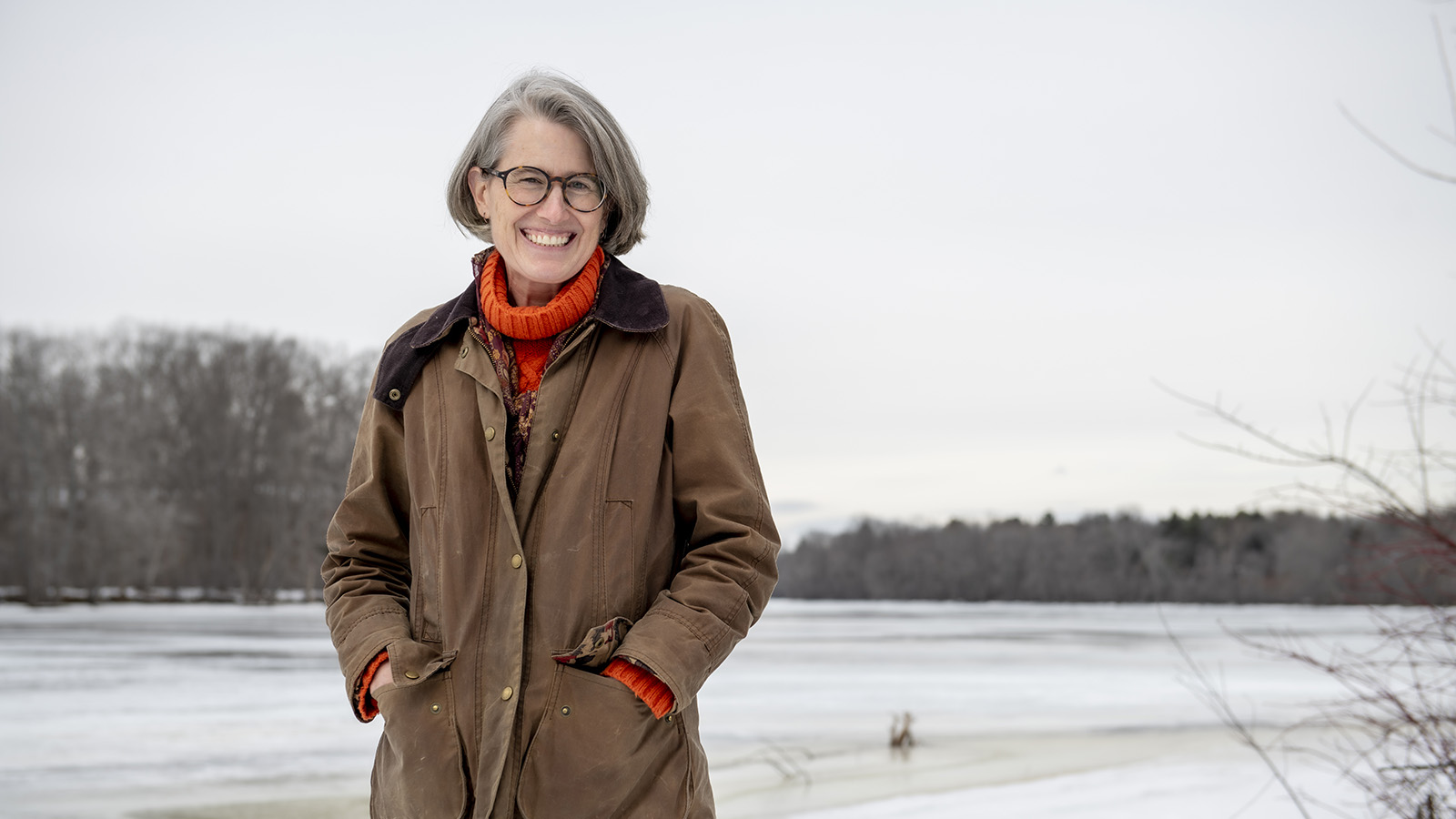
Jennifer Smith-Mayo: Rethinking how we talk about science
Jennifer Smith-Mayo was in the United Kingdom filming a documentary about a Jesuit priest when she felt a calling.
Smith-Mayo had been working as a photographer and videographer for most of her professional life. Her resume is diverse, working for well-known outlets such as National Geographic and Down East in locations all over the world, from Rome to the Democratic Republic of Congo.
“I was traveling a lot and saw everything, from encountering dire poverty in Africa coupled with indomitable human spirit to meeting the Pope a couple of times in Vatican City,” Smith-Mayo says.
Despite the thrill of a jetsetter life, Smith-Mayo was getting burnt out, and she felt herself yearning for more.
“There was something else that I was called to do,” Smith-Mayo says. “I’ve always been fascinated by science and I wanted to do something in that world, but with the tools that I came with — photography, videography and communication work that I’ve done.”
So, Smith-Mayo started as an Ecology and Environmental Science Ph.D. student, but eventually moved on to the communication Ph.D. program. She is co-advised by Bridie McGreavy, associate professor, Department of Communication and Journalism, and Heather Leslie, director of the Darling Marine Center.
Smith-Mayo wasn’t a stranger to UMaine when she started her doctorate. She completed her master’s degree in liberal arts with a concentration in new media at UMaine in 2011.
“I love UMaine,” Smith-Mayo says. “This is a thriving campus. We’re not afraid to try to do new work and build relationships. That’s really important to keep a university moving forward.”
Smith-Mayo’s graduate research focuses on the communication between groups in the Maine-eDNA (environmental DNA) Project, a research, education and outreach program that is working to establish Maine as a leader in the groundbreaking process of collecting environmental DNA, or eDNA. eDNA are genetic samples collected from the surrounding areas rather than the subject itself to determine the presence or absence of the subject in an area.
Because eDNA is so new, though, the exact definition is still emerging. Some of Smith-Mayo’s research is focused on how groups engaged with Maine-eDNA can best communicate to empower all voices involved in the conversation about how to define and use eDNA.
“Part of my dissertation will be focused on using questions to help us learn from each other and work with each other,” Smith-Mayo says. “What are the communication elements that help us become better collaborators? And how do they shape our collaborations? That’s what I’m curious about.”
Smith-Mayo has a four-year appointment on the team that conducts team science and communication research for the Maine-eDNA project. Her work with them will be folded into her thesis, and she recently co-authored a paper with that group of researchers.
“I’m not just an observer on the outside working on the project. I’m participating in it,” Smith-Mayo says. “You’re doing these multiple roles at once and you work with a small team of people to sort of figure out what’s going on.”
Smith-Mayo also works with the ethics of eDNA research. She is in the Biocultural Labels working group, which is made up of people from Local Contexts, a group called Equity for Indigenous Research and Innovation Coordinating (ENRICH) Hub, the Wabanaki Tribal Nations and the Maine-eDNA project. Biocultural Labels grew out of a graduate pilot project from last semester as part of her coastal team science class. The project takes a collaborative approach to collecting eDNA, adding digital markers, metadata and graphical icons to eDNA data that contain information about the cultural rights and Indigenous lands from which the samples were gathered.
“We’re collecting data from their tribal homelands and we’re learning about it. We’re asking researchers and scientists and the university at large to think about what that means — what are the responsibilities for doing this work and doing it in an ethical way?” Smith-Mayo says. “We’re trying to help the research community and the Wabanaki Nations build relationships together and start to work with data in a more responsible way.”
Smith-Mayo intends to finish her Ph.D. in 2024, and after her contract on her job ends, she hopes to find a fellowship or postdoctoral position where she can continue her work helping scientists and researchers better communicate their work in new ways, such as through stories.
For example, she is doing work with an underwater drone that comes with a virtual headset, allowing head motions to drive the drone underwater. The underwater drone has proven handy in a number of different applications, from wowing undergraduates with a virtual reality-like experience and saving an eDNA sediment trap that had dropped to the bottom of a pond, to filming a sediment corer at work underwater to add to a researcher’s presentation.
“If you have a visual, it helps people better comprehend what’s going on. It brings my photography, videography and art background into a science project and I think it gives people the opportunity to see there are lots of ways to think about an idea or a problem,” Smith-Mayo says. “Visuals — and visual collaborations — can offer a space for discussion, listening and sharing our multiple perspectives. It doesn’t always have to be one way, it can be a lot of ways.”
Contact: Sam Schipani, samantha.schipani@maine.edu
